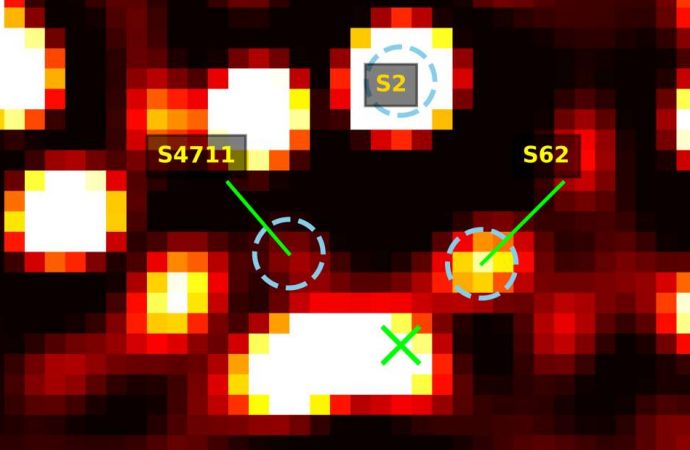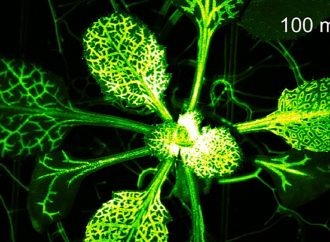Astronomers looking at the core of the Milky Way have discovered some of the most extreme stars in our galaxy. Orbiting the central supermassive black hole known as Sagittarius A*, one of these stars is now the fastest ever discovered in the galaxy, moving at around 8 percent of the speed of light.
Source: IFL Science
This record-breaker, called S4714, is among five new stars that were discovered orbiting the supermassive black hole (SMBH): S4711, S4712, S4713, and S4715. The star S4711 is also a record-breaker, orbiting Sagittarius A* in the shortest amount of time at just 7.6 years. The discovery and properties of these stars are reported in The Astrophysical Journal.
For years, the closest star to the SMBH was believed to be S2, which was extensively used to test relativity. However, the “closest” title was recently taken by star S62.
“The mean distance of S4711 is shorter than any other star. But when it comes to the pericenter distance, S4714 is the shortest known to date with 12.6 AU (just about 13 times the distance Earth-Sun). S62 has a pericenter distance of 17.8 AU, and S2, for comparison, has 119.3 AU,” lead author Dr Florian Peiβker told IFLScience.

The reason for this difference is that S62 and S4714 have an extremely eccentric orbit compared to S2 and S4711. Not only do they get closer but they also move much faster than the other two. S4771 is moving at a respectable 6,700 kilometers (4,200 miles) per second, or 2.2 percent of the speed of light, at its closest point to Sagittarius A*. For S62, the pericenter velocity is around 20,000 kilometers (12,400 miles) per second. For S4714, it is a whopping 24,000 kilometers (15,000 miles) per second.
Sagittarius A* weighs over 4 million times the mass of the Sun. The proximity of these stars to a black hole of this size has important consequences. Almost two decades ago, researchers predicted the existence of “squeezars”, stars that are squeezed under the gravity of the black hole, changing their luminosity as they interact gravitationally.
“We speculate that S4711 and S4714 are squeezar-candidates. The distance, speed, but also the possibility that these stars come so close to an SMBH (like S62) is fascinating and unexpected,” Peiβker explained to IFLScience. “We actually do a spectroscopic analysis of S4711 and find that this star is around 150 million years old. That such a young star can orbit in the direct vicinity of Sagittarius A* is surprising.”
The team speculates how such stars came to be based on the Hills Mechanism, which sees a complex three-body interaction between a pair of binary stars. As the two stars get too close, one gets kicked out and the other begins orbiting the black hole in a more or less elliptical orbit. Another scenario sees both stars separated and put on eccentric orbits like S4714.
More observations of these stars are needed. It is possible that unknown stars are currently orbiting Sagittarius A* just waiting to be discovered.
Source: IFL Science

































Leave a Comment
You must be logged in to post a comment.